 |
|
HOME
|
US Navy -
ships
|
US Navy - air
units
|
USMC - air
units
|
International
Navies
|
Weapon Systems
|
Special Reports |
|
Japan Maritime Self Defense Force / JMSDF Hyuga class Helicopter Destroyer - DDH |
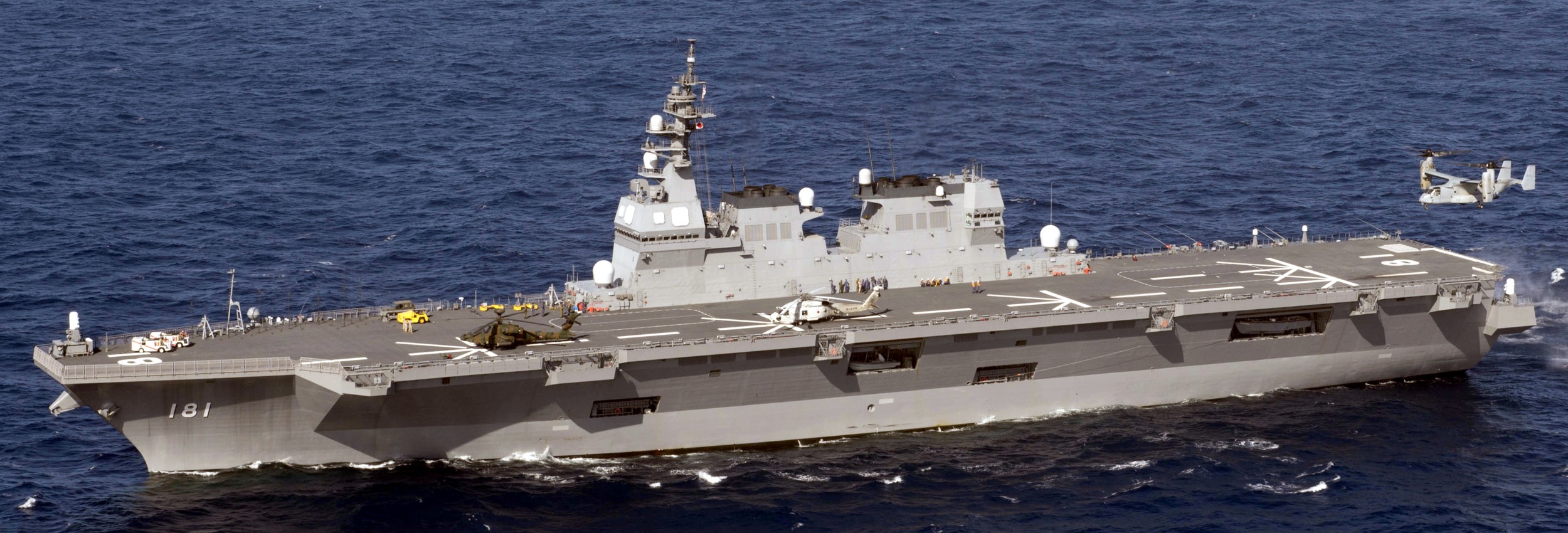 |
| 07/22 |
| Ships: |
|
DDH-181 JS Hyuga (2009) DDH-182 JS Ise (2011) |
| Specifications: |
|
Length: 197 meters (646 feet 4 inches) Beam: 33 meters (108 ft 3 in) Draft: 7 meters (22 ft 11 in) Displacement: 13950 tons (standard) / 19000 tons (full load) Speed: 30+ knots (56 km/h) Range: - Complement: 360 (Hyuga) / 371 (Ise) Propulsion: Combined Gas and Gas (COGAG) 4 x Ishikawajima Harima Industries - IHI/General Electric LM2500-30 gas turbines (100000 shp / 75MW) 2 shafts / 2 controllable pitch propellers Aviation: full flight deck (4 landing spots) / hangar deck up to 18 aircraft, max. (SH-60K Seahawk / MCH-101) Armament: Mk-41 Vertical Launching System / VLS (16 cells) for a mix of: RIM-162 Evolved Sea Sparrow Missiles / ESSM (4 per cell) RUM-139 Vertical Launch ASROC 2 x Type 68/HOS-302 (Mk-32) 12,75-inch (324mm) triple torpedo tubes for Mk-46 or Type 73 torpedoes 2 x Mk-15 Phalanx Close-In-Weapon-System (CIWS) Systems: ATECS (Advanced Technology Command System) OYQ-10 Advanced Combat Direction System FCS-3 Anti-Air Warfare System (AAW) OQQ-21 Anti-Submarine Warfare System (ASW) NOLQ-3C electronic warfare system (ESM/ECM) OPS-20C Surface Search Radar |
|
The Hyūga-class helicopter destroyer is a class of helicopter
carrier built for the Japan Maritime Self-Defense Force (JMSDF). Two
- Hyūga and Ise - were built; upon completion the class were the
largest ships built for the Japanese navy since the Second World
War. Hyūga was described in a PBS documentary as the "first Japanese
aircraft carrier built since WWII." The Hyūgas were followed by the larger Izumo class, the first being commissioned in March 2015. The Izumos will replace the Shirane-class helicopter destroyers; the Hyūgas were originally meant to replace the Shiranes. The specifications of the Hyūga class are comparable to light aircraft carriers, such as the Italian Giuseppe Garibaldi and Spanish Príncipe de Asturias. Under the JMSDF's naming conventions, the ships are called Goei-kan (lit. escort ship) in Japanese and destroyer in English, as same as all the other combatant ships of JMSDF. During development, Hyūga and Ise were provisionally named "16DDH" and "18DDH" respectively. The numbers derived from the Japanese calendar, specifically the 16th year and 18th year of the Heisei reign (2004 and 2006), when the provisional name were given. The Hyūgas are primarily anti-submarine warfare carriers operating SH-60K anti-submarine helicopters. They also have enhanced command-and-control capabilities to serve as flagships. During peacetime, Hyūgas and Ōsumi-class ships could operate together to conduct military operations other than war, peacekeeping and relief operations. The ships are armed with a 16-cell VLS carrying the RIM-162 Evolved Sea Sparrow Missile surface-to-air missile, and Phalanx close in weapon system for self-defense. They are also equipped with the ATECS command system and FCS-3 fire control with active electronically scanned array radar system. Globalsecurity.org suggests a maximum capacity of 18-24 H-60 class helicopters, or a smaller number of larger helicopters, even though the official complement was reported as three Mitsubishi H-60 and one AgustaWestland AW101 helicopters, or three Mitsubishi H-60 and one Sikorsky CH-53 Sea Stallion helicopters. The ships have also operated JGSDF Fuji AH-64D Apache attack helicopters during joint amphibious exercises with the United States. It is speculated that future modifications may allow the operation of VTOL/STOVL fixed-wing aircraft, such as Harriers or F-35 Lightning II. In 2013, the USMC operated V-22 Ospreys on Hyūga during joint amphibious exercises. In 2016, MV-22 Ospreys operated off Hyūga in the participation of relief efforts following the Kumamoto earthquake. source: wikipedia |
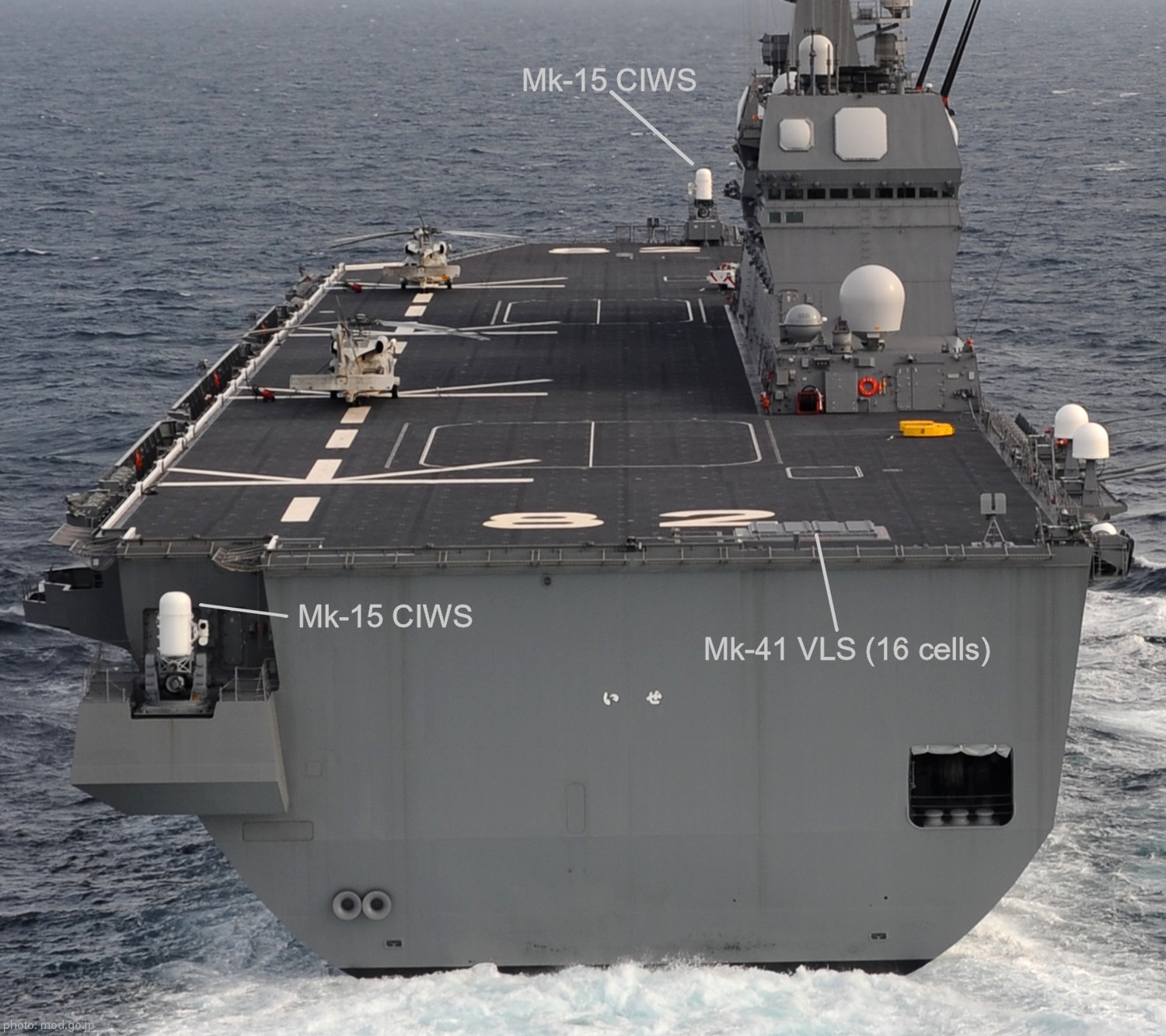 |
|
class images for more images go to the individual ship-site |
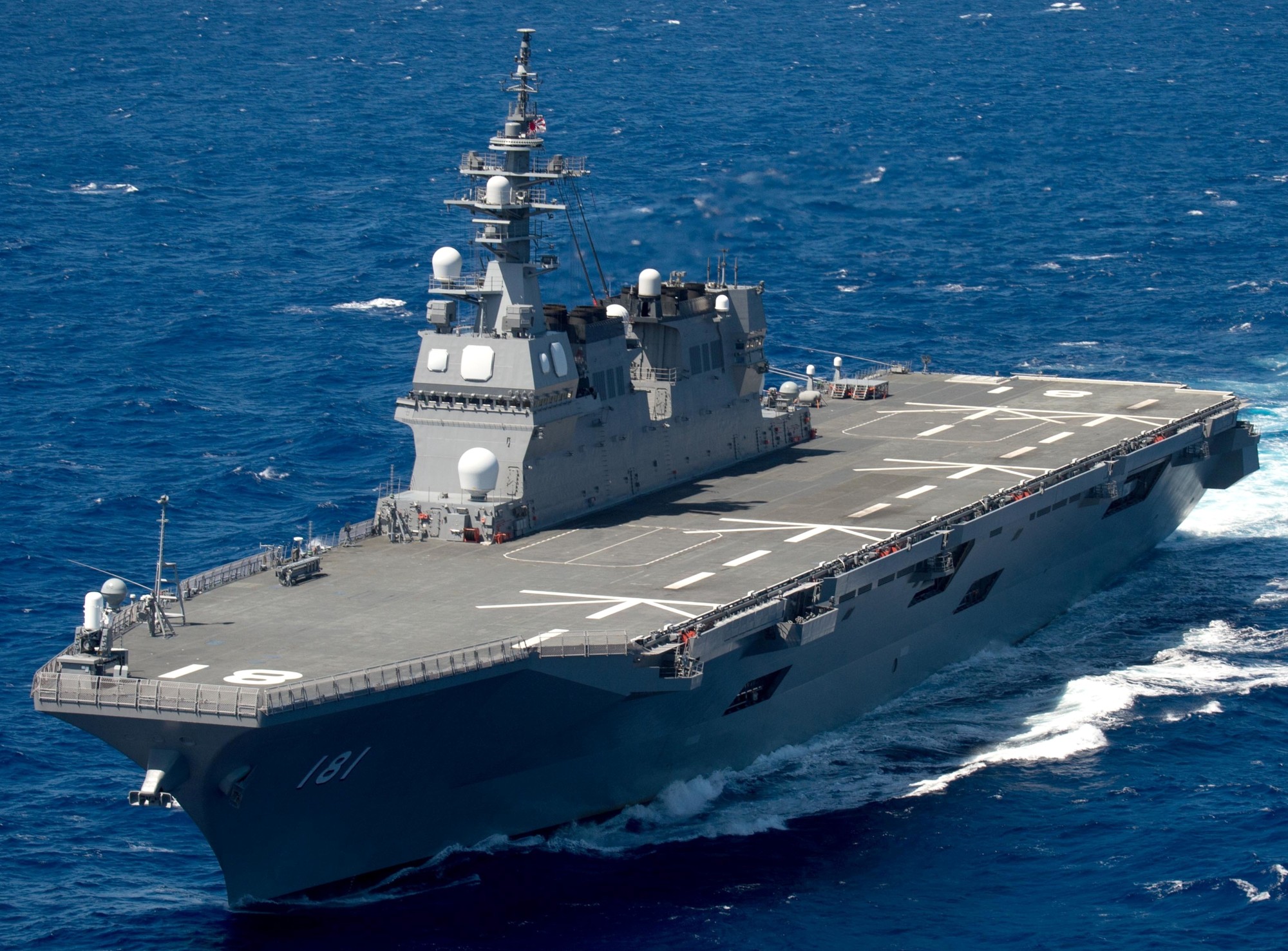 JS Hyuga (DDH 181) 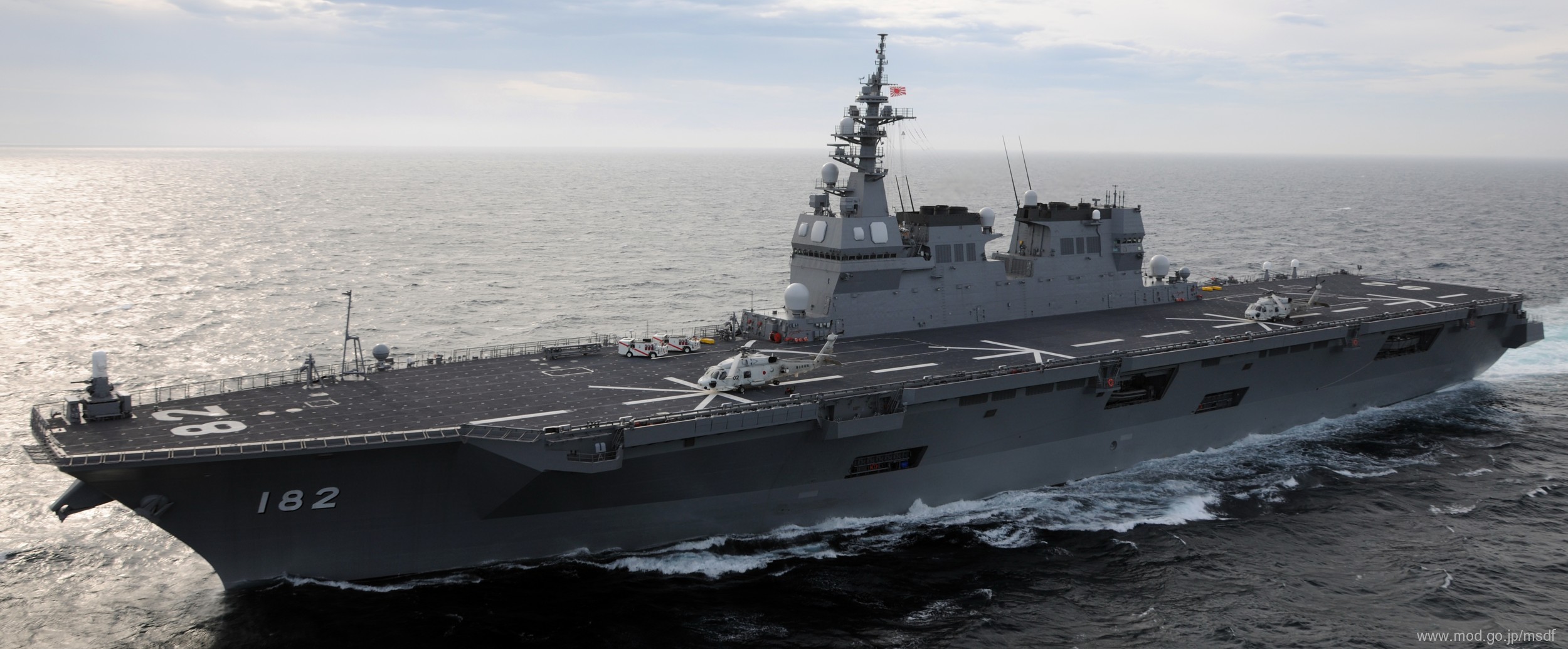 JS Ise (DDH 182) detail images 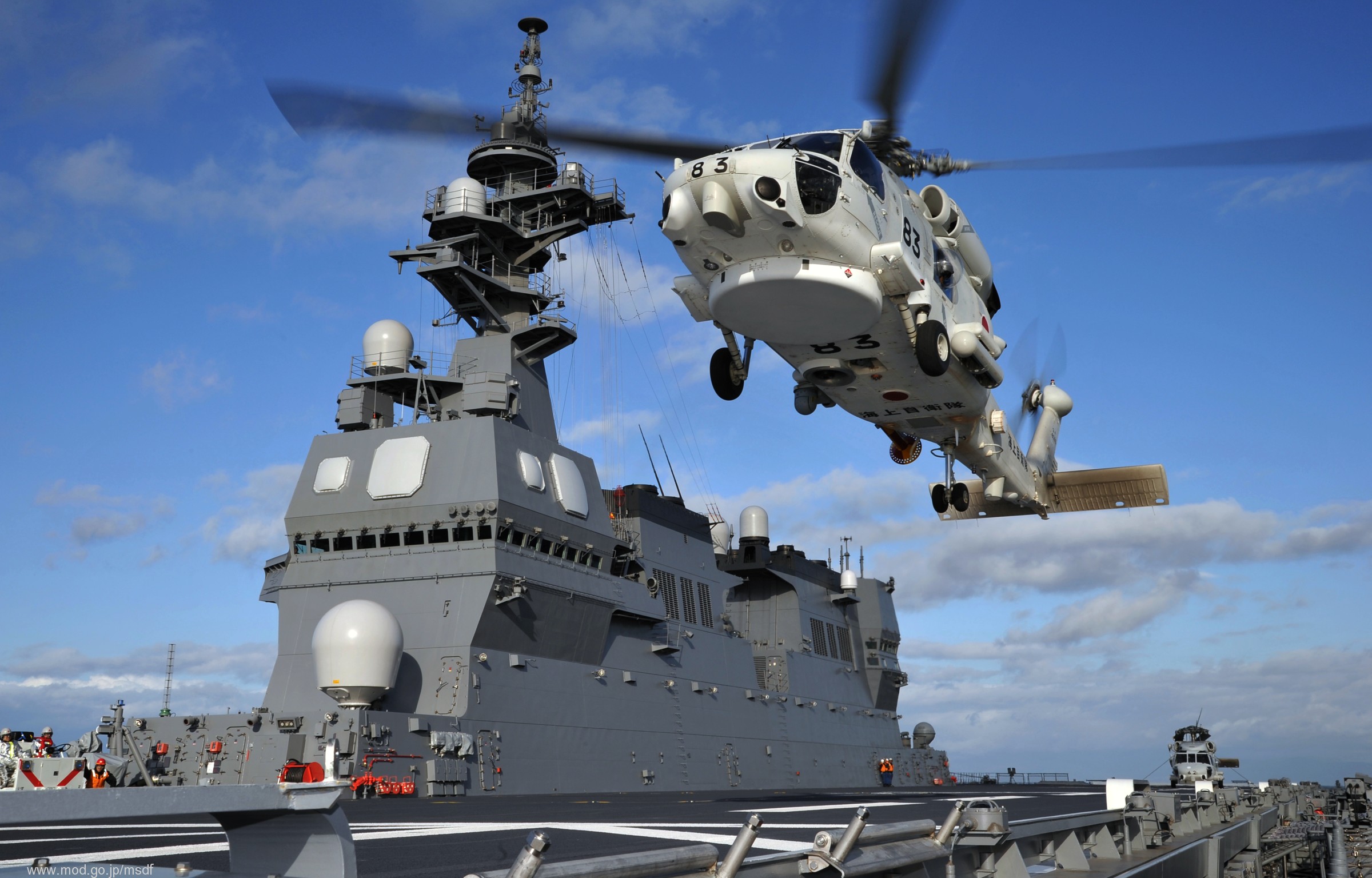 island with FCS-3 AAW radars 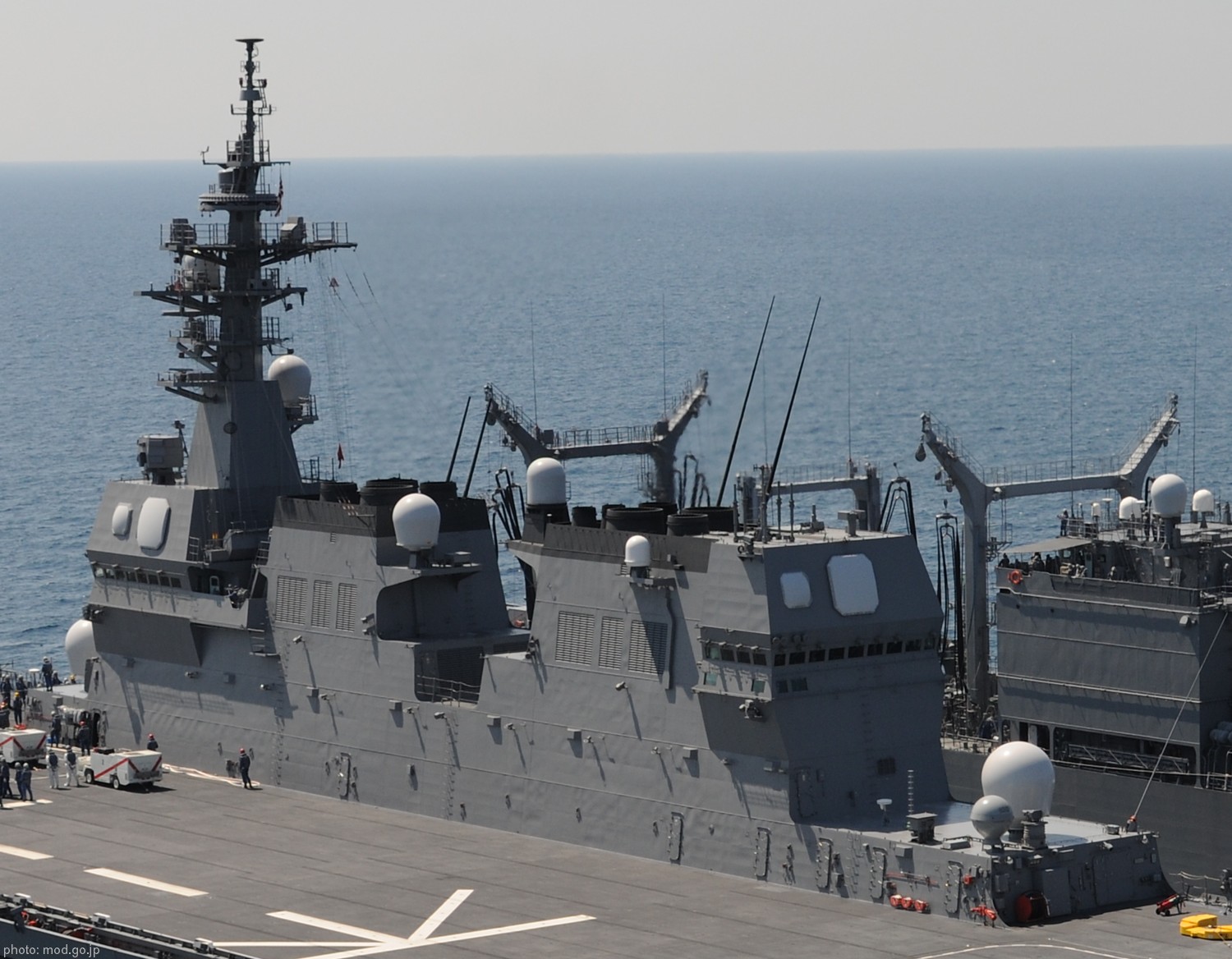 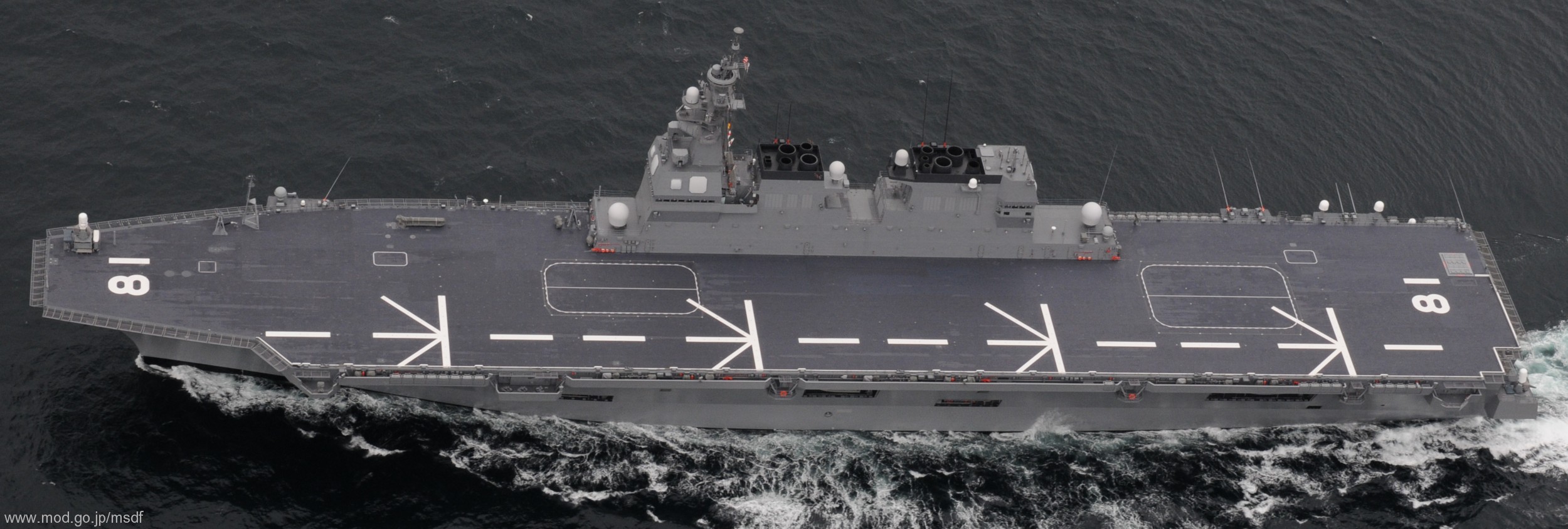 full flight deck with 4 landing spots 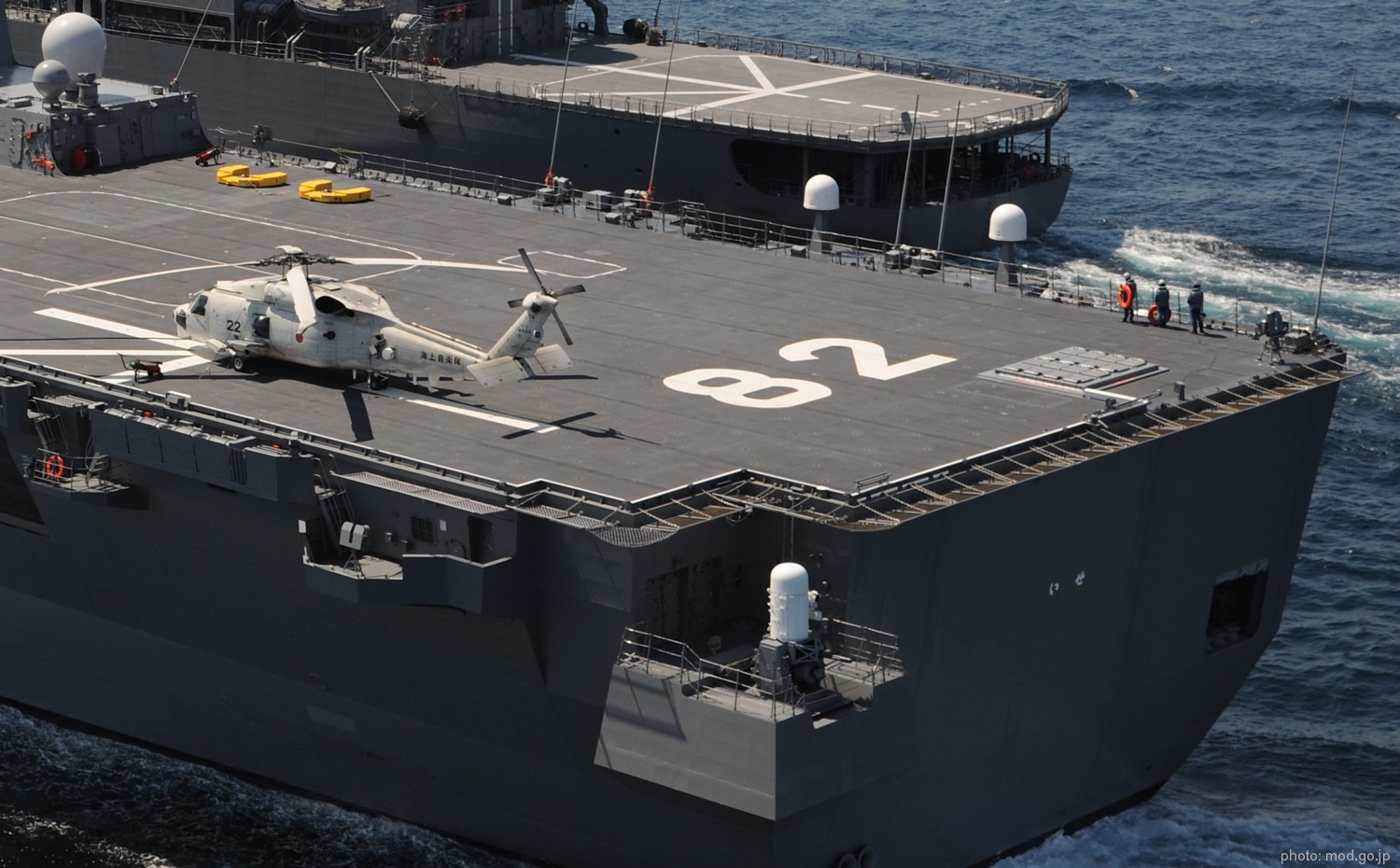 Mk-15 CIWS and 16-cell Mk-41 VLS 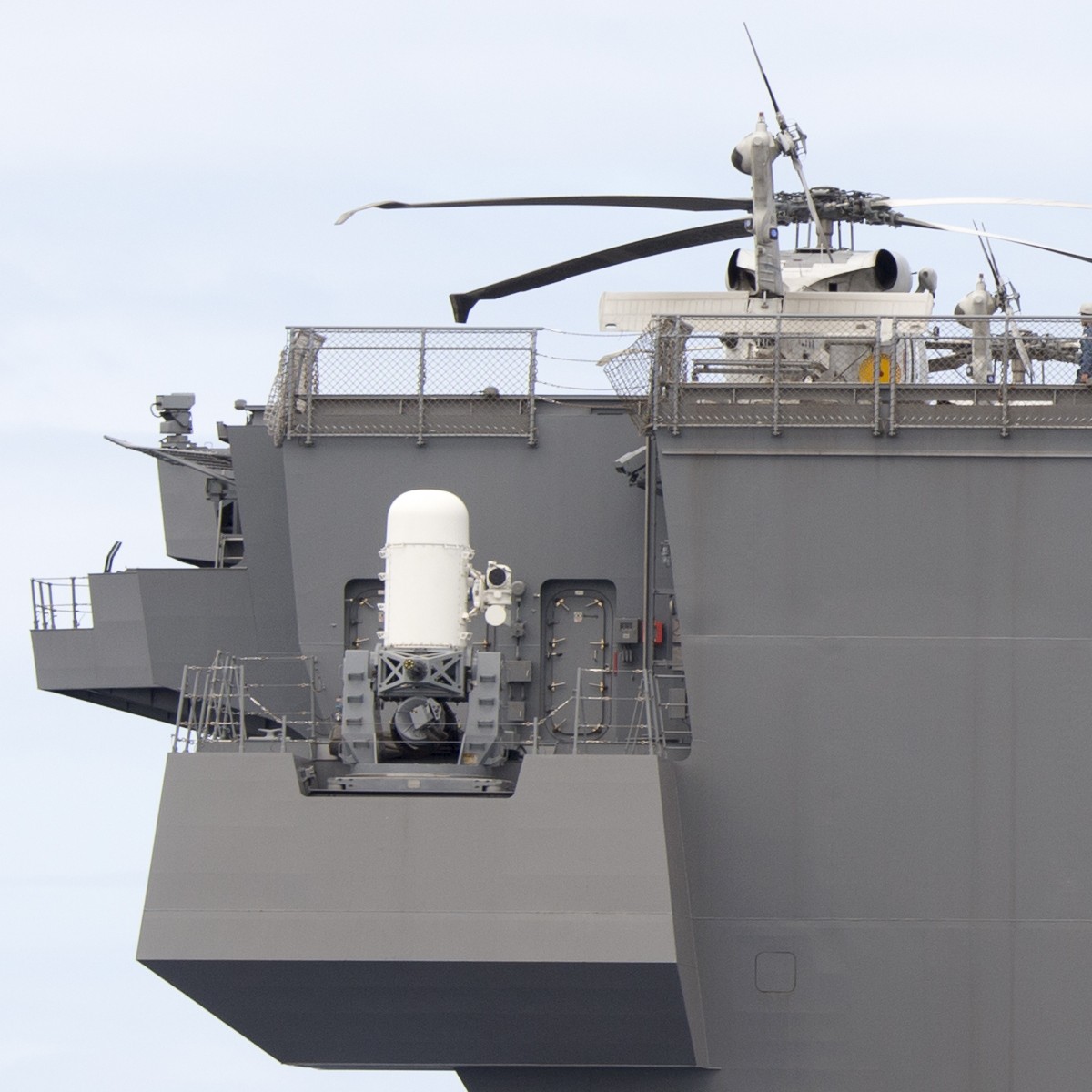 Mk-15 Phalanx CIWS 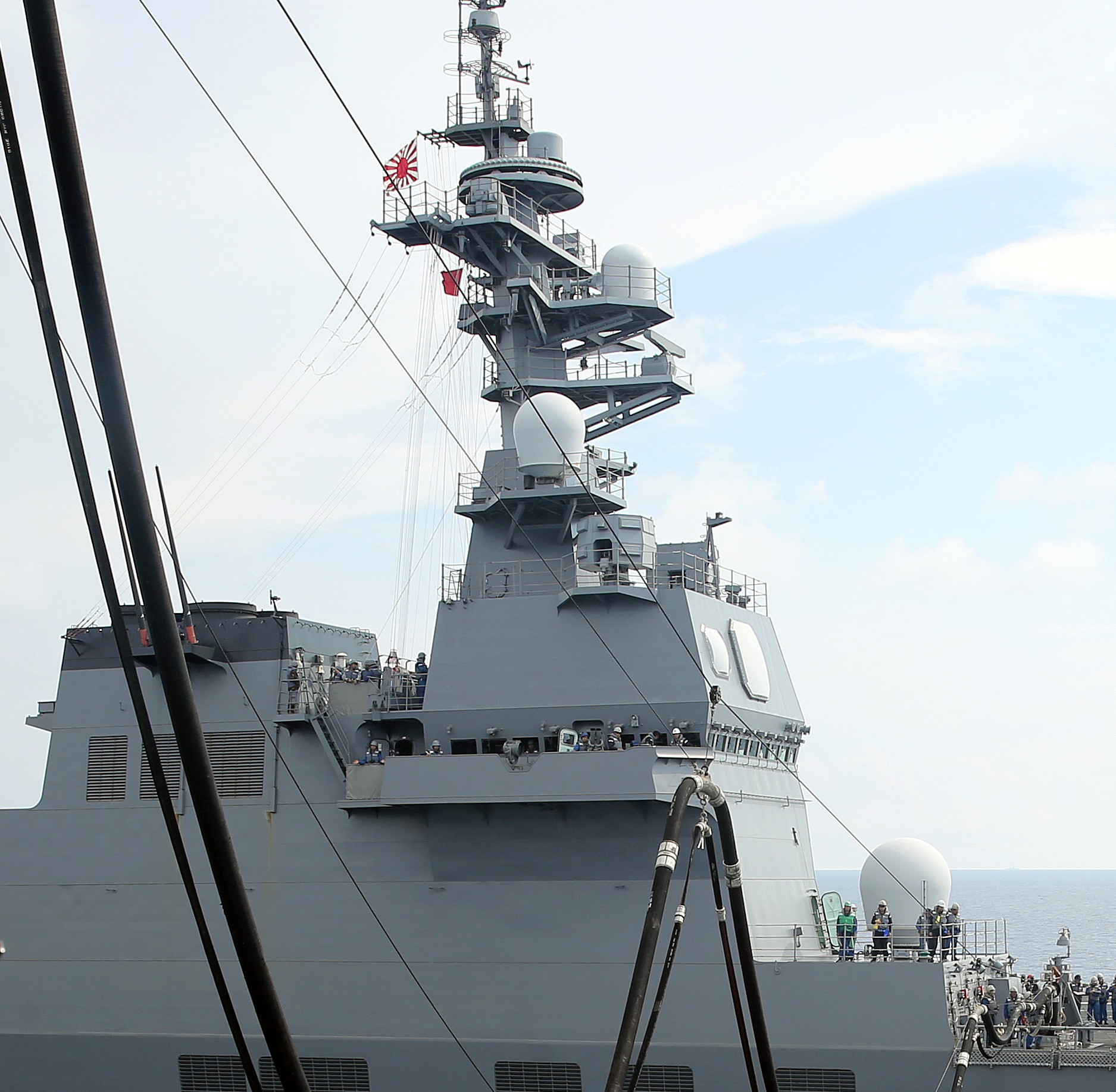 island and mast details 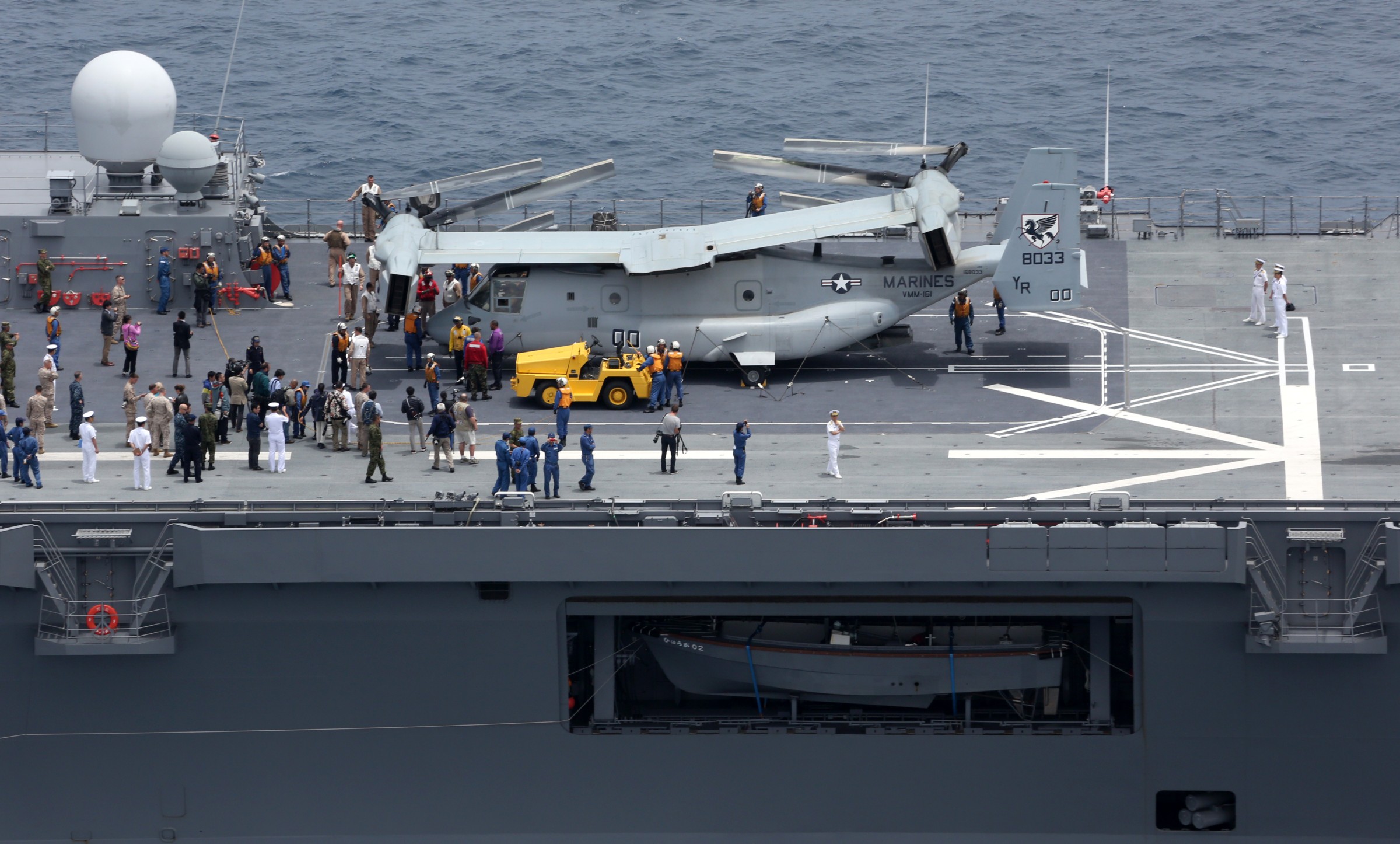 an US Marine Corps MV-22B Osprey was placed on the aircraft elevator - note the Type 68/HOS-302 triple torpedo tubes at the bottom right corner 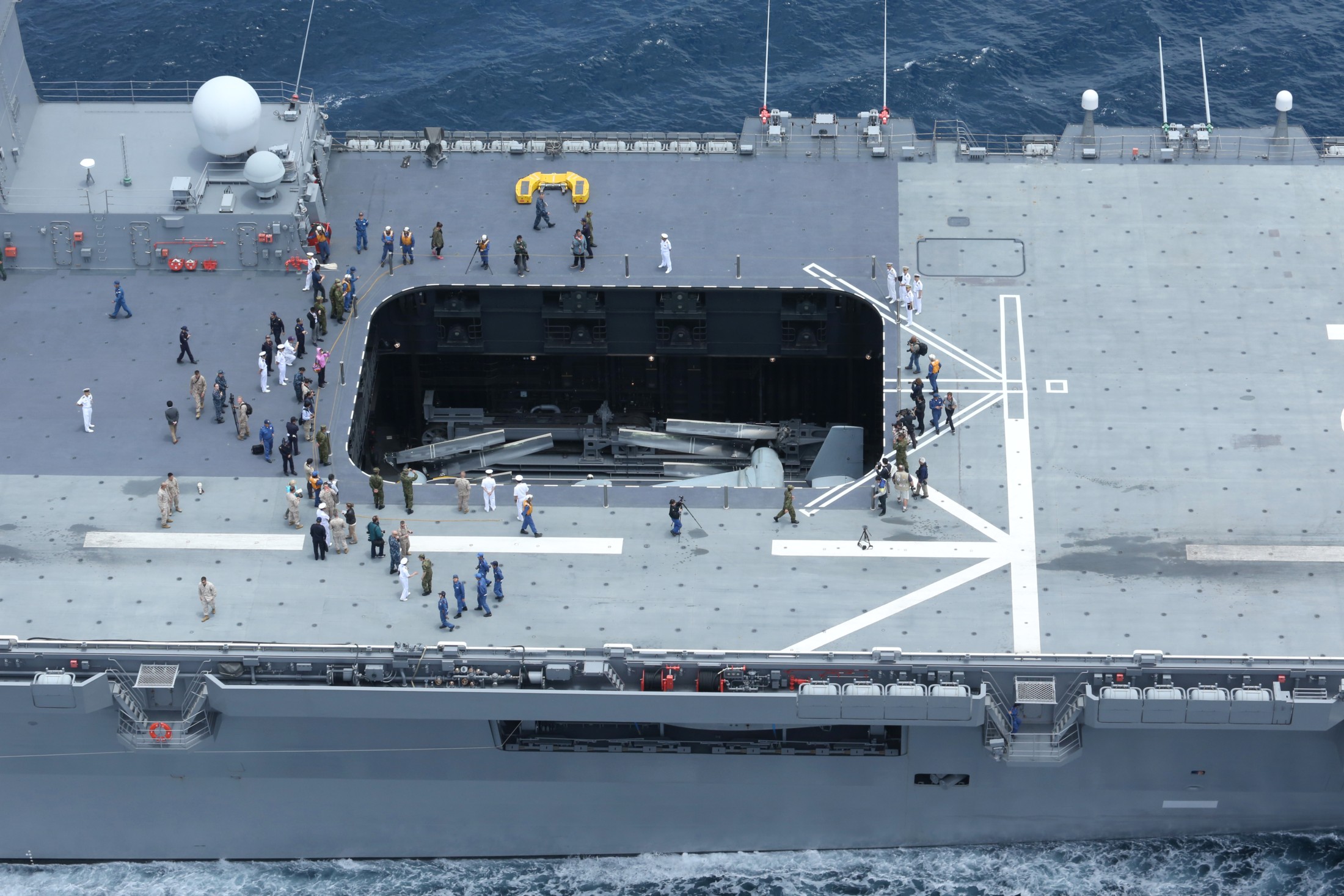 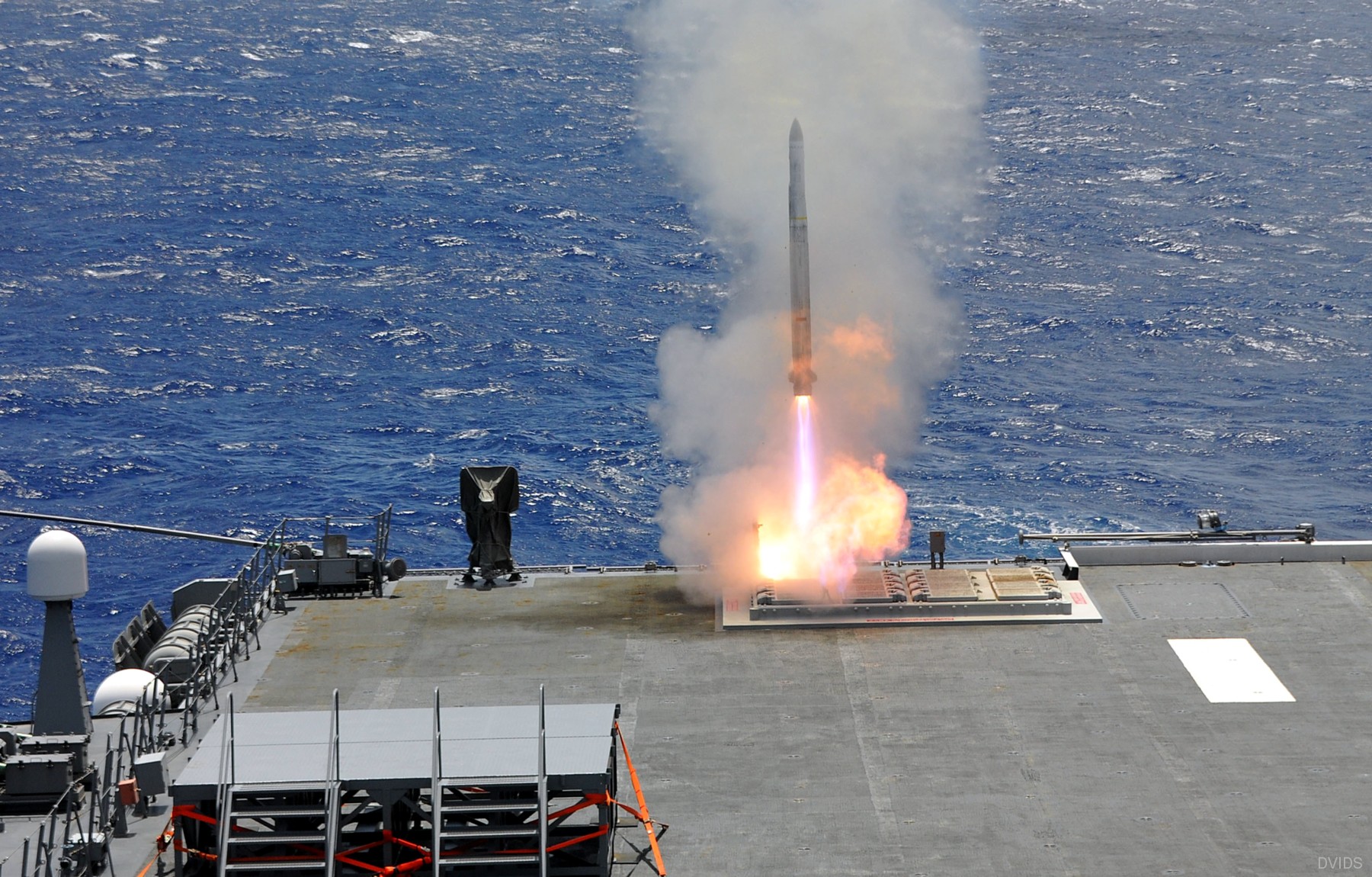 a RIM-162 Evolved Sea Sparrow Missile (ESSM) was launched from the Mk-41 Vertical Launching System (VLS) |
|
|
seaforces.org
|
Japan Maritime Self Defense Force start page
| |